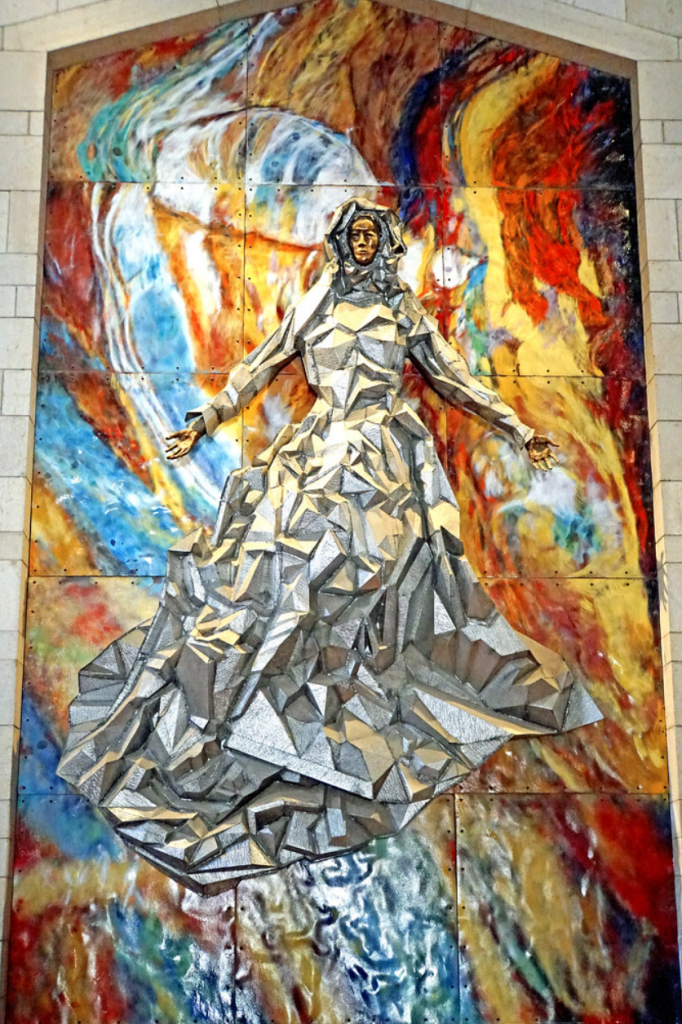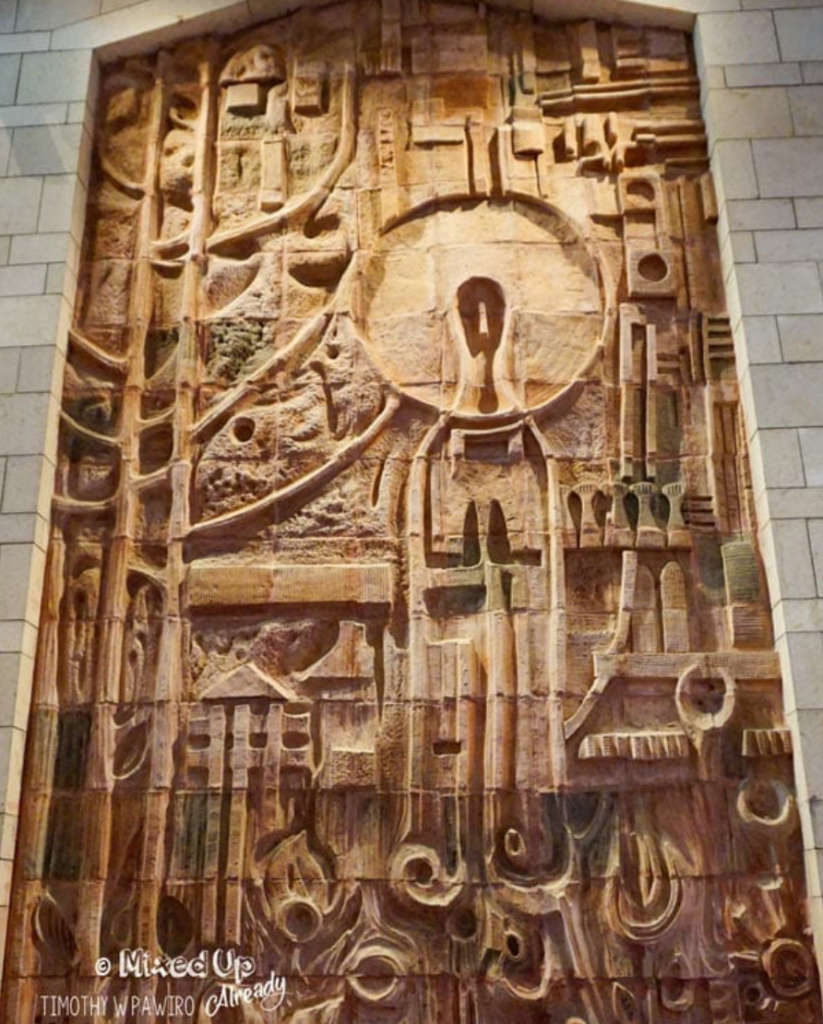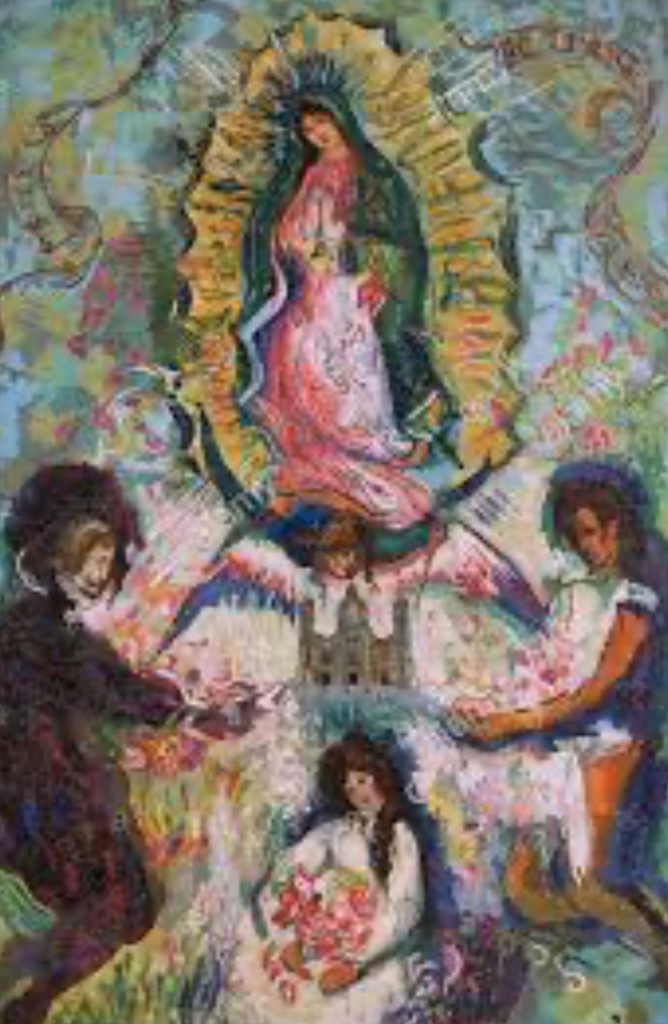So Many Marys
I’ve been taking some of the pertinent highlights of our trip to Israel and Jordan and
trying to discern how they relate to understandings of women in the Church and, more
importantly, how those perceptions of women may have changed. (She says hopefully!)
The Basilica of the Annunciation in Nazareth may have some hope filled clues. The
church is set atop a cave entrance where Mary and her family possibly – many think
probably – lived and, thus, may have been where she received the world-changing
announcement. I had to go down many steps to reach the cave and, although there was a
gate and small altar in front, was able to see the actual cavern opening carved into the
stratified cream and sandstone rockface. It was one of the few holy sites we visited in
which I could actually sense what it was like to live in a home hollowed out of rock in a
tiny backwater village and yet be part of something so momentous.
Most glorious, however, both inside the church itself, and in the colonnaded portico
outside, were myriad paintings, mosaics, frescos, carvings of many, many Marys from
around the world. Powerful, humble, fierce, gracious, dignified, gentle, dark, light,
Eastern, Western, ancient, contemporary, indigenous, fantasmagorical and everywhere in
between, even a deconstructed version, there was Mary, woman, us.
Our guide had asked us, as we toured the basilica, to look three particular versions of
Mary and to decide on our reactions. The one was from the United States, the second
from Canada, the third, Mexico. Here they are in order. See how you react:



I, of course, immediately fell in love with Mexico’s interpretation: Mary, the patroness of the indigenous people, I thought, fills my heart with gladness. It is a beautiful, pleasing picture softened with the blues and pinks and golds and lavenders and ivories I love. I was at first enraptured, but then I thought, is it a too romanticized, too precious version of woman? Notice that both female images are smaller than the male gatherers and both seem so passive, motionless as the mightier men move around them. Both are recipients of reverence, perhaps, patronage certainly, but the image seemed too full of old truisms, something past and to be passed over.
In stark contrast, the American Mary loomed. She was fierce, dominant, staunch; her face deadly serious, severe even, angry, belligerent; the folds of her gown sharpened, pointed, and at her back a fiery, raging storm. Don’t get too near, she seemed to be saying, unless you understand my tremendous power, the forcefulness of my being, unless you respect all that I am and can and will be.
It was the Canadian Mary, however, who most fascinated me. Carved in wood relief, the face and form are barely defined and certainly not beguiling. But notice all the wooden shapes and carvings surrounding the central figure. I felt as if I could reach up and pick some out and add to the image of Mary myself, fitting in the materials in such a way that she spoke to me and maybe others, and that others, too, could reshape the image to speak to them and to me. The image seemed alive with ever-changing possibilities. Mary could be new and renewed every day, and we all would be able to learn and grow and expand our view: of Mary, of woman, of us.

3 Responses
A balance of matrifocal and patrifocal values is essential for any adequate anthropology. In the Catholic Church, the Virgin Mary has provided the matrifocal value for 2000 years. It is time for other qualified women to provide the maternal “care for our common home” in a more tangible form, in the flesh. See this:
https://sustainable-world.ch/book/matrifocal-patrifocal-balance-3-paradigm-shifts-bernard-lietaer
Excellent essay, Ellie! I had the same response to the Guadalupe Mary at first, and you pushed me to look at the other images and see more than I had the first time. Thanks again for sharing your trip with all of us!
Ellie, I agreed about the three Marys. The American one required a plaque explaining the theory behind it. The Mexican, while racially appealing, was to my mind a bit sentimental (and as you point out, sexist). The Canadian one was serene and aesthetically pleasing.